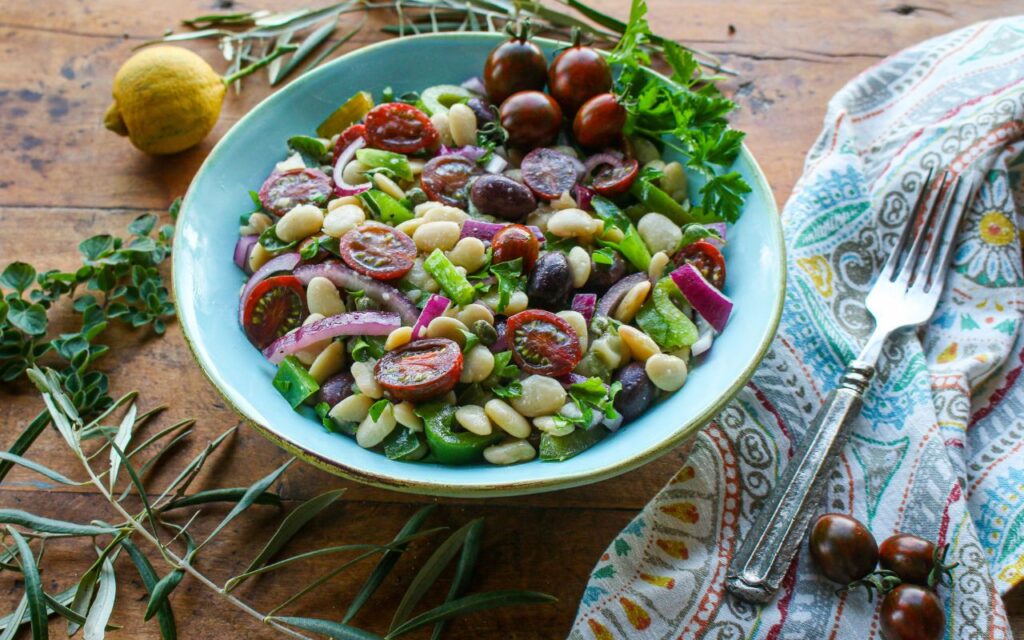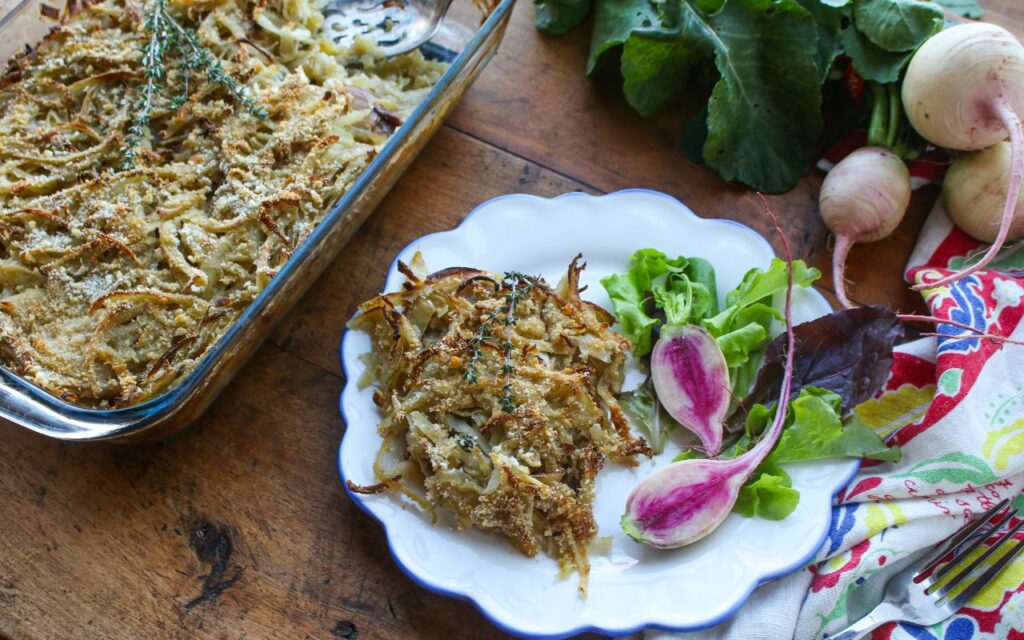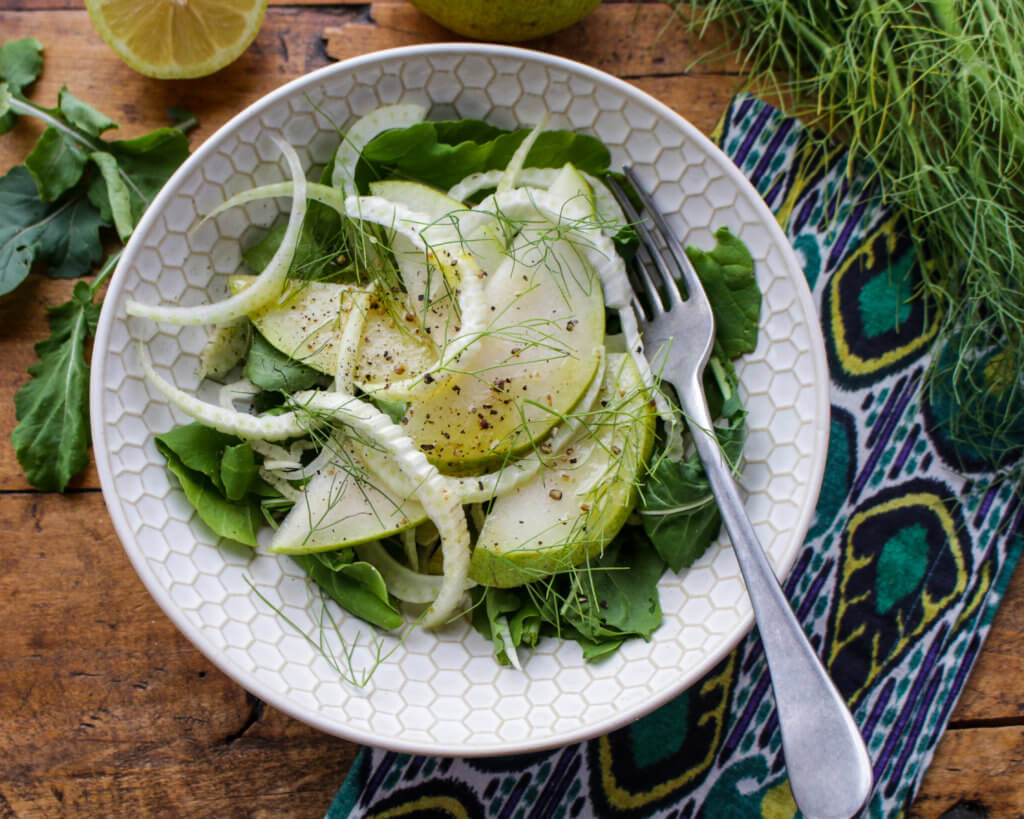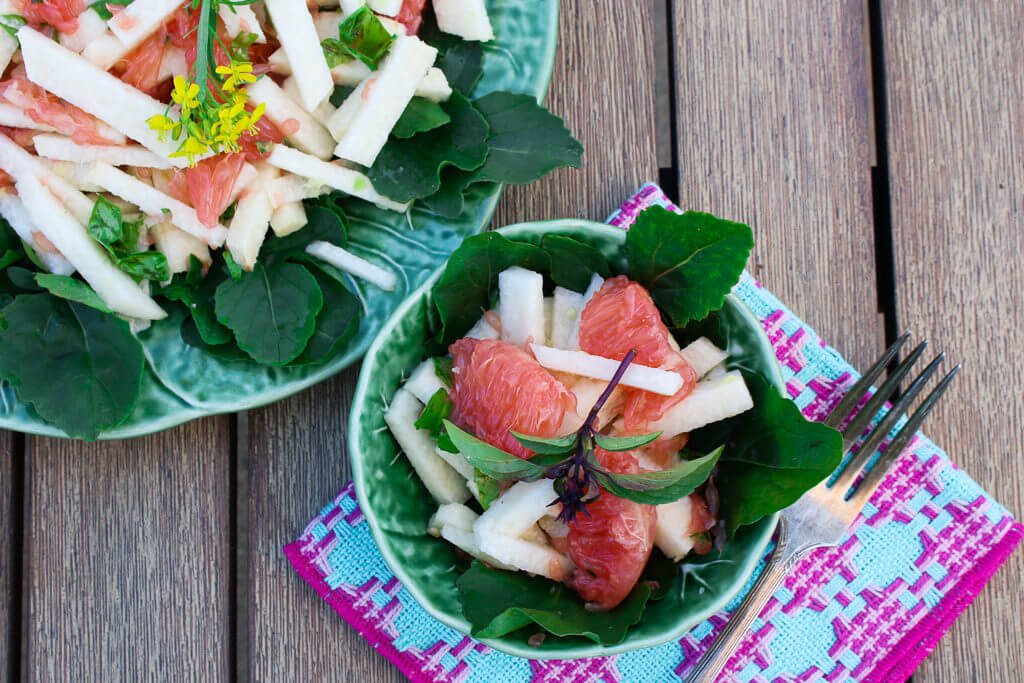Health Benefits of White Vegetables + White Vegetables Recipes

Don’t leave out white vegetables on your shopping list–these versatile, sustainable, disease-protective vegetables have multiple health benefits. Get inspired with this guide including a white vegetables list, white vegetables recipes, and nutritional benefits of white vegetables.

“Eat the rainbow.” You’ve heard nutrition professionals (including me!) say it repeatedly when talking about how to make healthy choices in produce selections. What we’re really emphasizing is variety and diversity—eating an array of produce species, marked by their colors, helps to maximize nutrient intake. However, researchers are beginning to find that white vegetables often go overlooked, and color may not be the only indicator of nutritional quality. While the U.S. Department of Agriculture’s MyPlate recognizes two vegetable subcategories based on color—green and red/orange—no distinction is given to white vegetables, even though they also appear to play an essential role in the phytochemical rainbow.

White Vegetables List
Many vegetables are known for their shades of white, but there are also several varieties of produce that come in white in addition to other colors, such as asparagus, eggplant and radishes. Here are some common vegetables that you’ll find on the white veggie list:
- Cabbage
- Cauliflower
- Fennel
- Garlic
- Jicama
- Kohlrabi
- Onions
- Parsnips
- Rutabaga
- Turnips
- White asparagus
- White beans
- White corn
- White eggplant
- White mushrooms
- White potatoes
- White radishes

White Vegetables Nutrition
Of course, white veggies, from cauliflower to mushrooms, taste amazing. But consuming white vegetables also has many health benefits, such as increasing the consumption of fiber, potassium, magnesium, vitamin C, and phytochemicals linked with health protection.
Potatoes, the most commonly consumed vegetable in America and an excellent source of vitamin C and potassium, might have protective effects against heart disease and reduce the chances of developing kidney stones—additionally, potassium aids with healthy bone maintenance.
It should be noted that the preparation methods matter regarding potatoes. Today, many of us tend to eat potatoes in their more highly processed diet (bring on the fries, chips, and butter baked potatoes!). If potatoes are high in saturated fats and salt, that’s not a good thing. Plus, you want to make sure you include the potato peel to get more fiber into your day. Some healthy ways to prepare potatoes include roasting, baking, boiling, or steaming.
Additionally, magnesium is abundant in white vegetables. Magnesium is thought to be deficient in roughly 60% of adults. Not getting enough magnesium is related to increased inflammation. Unhealthy body weight has also been correlated with low intake of magnesium. Magnesium is an essential nutrient because it is involved in over 300 bodily reactions. Many diseases are associated with low levels of magnesium.
White vegetables also contain high levels of fiber. The fiber in white vegetables aids in healthy bowel movements, feelings of fullness, lower cholesterol, and a better gut microbiome. In the United States, fiber intake is far below where it should be. Studies show that men and women typically consume roughly 15 g of fiber daily, while the recommendations are 21-25g/day for women and 30-38g/day for men. So white veggies can help get you there!
Additionally, many white vegetables are rich in phytochemicals linked with health protection. For example, the allium family (onions, garlic) have antioxidant compounds, and the cruciferous family, including cauliflower, cabbage, and radishes, have sulfur compounds linked with cancer-fighting action.

Cooking with White Vegetables + White Vegetables Recipes
White vegetables go beyond good nutrition, they also have the power to add so much flavor and texture to meals. From fresh, to roasted, to steamed, to grilled, white vegetables are versatile in myriad ways, and can be included in a variety of dishes, including smoothies, dips, soups, salads, side dishes, main dishes, and more! Here are some of my favorite suggestions for incorporating more white vegetables into your everyday diet.

1. Make White Veggies the Star of Your Meal
White vegetables, such as cauliflower and onions, can add an excellent flavor and texture to your meal, in addition to added health bonuses. Try comfort food meals, such as lasagna, pot pie, spaghetti, and tacos to get started.

2. Lean into Potatoes
Is there anything more comforting than potatoes, from baked to mashed to roasted? A nutritious staple, potatoes can be the heart of a healthy meal, simply boiled or baked and served with vegan meatballs, mushroom marsala, or lentil patties. Or part of your favorite potato salad, veggie sheet pan, or boil.

3. Go Wild for Mushrooms
White mushrooms (as well as other varieties) offer such a savory, umami quality to plant-based fare. Which is why you’ll find mushrooms in my nearly daily rotation. I even add them to my daily smoothies, because of their special immune-protective nutrients. Get cooking with mushrooms in soups, stews, pasta dishes, salads, casseroles, and side dishes.

4. Toss into Salads
Turn to the crunchy texture of white vegetables, such as white radishes, fennel, and jicama for a crisp bite in your next salad. Available during the cooler months, white veggies can add nutrition, flavor, and pizzazz to your daily salad bowl.

5. Rely on White Beans
Many overlook the fact that white beans are not just a vegetable, they are also a protein source. A ½-cup serving of white beans can take the place of animal protein on your plate–plus they are packed with fiber, and provide vitamins like folate and vitamin B6, and minerals like iron, magnesium, and potassium. So turn to white beans to add to your salads, vegan meatballs, soups, stews, chili, casseroles, pasta, and dips.
Discover more healthy, delicious recipes for white vegetables here:
- Whole Roasted Cauliflower with Shawarma Spice and Herbed Vegan Yogurt
- Buffalo Cauliflower Tofu Skewers
- Shaved Kohlrabi, Carrot, Radish Slaw
- Fennel Carrot Soup with Ginger and Turmeric
- Pantescan Potato Salad
- Peanut Chinese Cabbage Salad
- Vegan Heirloom Beans Cassoulet
- White Bean Sage Vegan Meatballs with Pomegranate Mandarin Sauce




